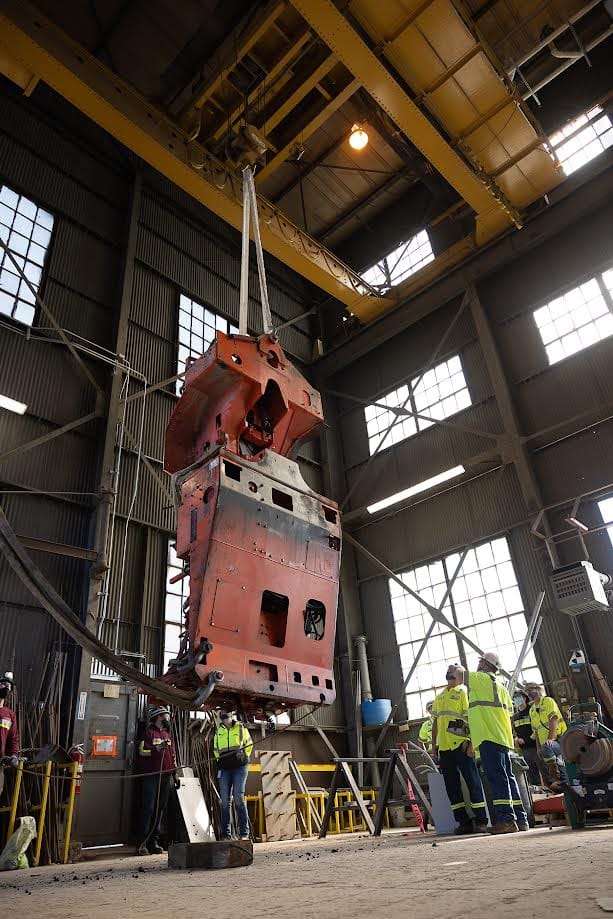LEAD, S.D. – At the Sanford Underground Research Facility (SURF), some of the most critical work never makes headlines. Deep below the Black Hills, master riggers oversee the precise and high-stakes process of moving heavy equipment and scientific instruments between the surface and 4,850 feet underground.
The job is known as “slinging equipment,” where anything too large for the 5-by-13-foot cage is suspended below deck and lowered through the Ross Shaft. From front-end loaders to sensitive detectors, every load requires careful planning, coordination, and trust in the crew.
“You have a lot of people’s lives at hand, and a lot of expensive equipment at hand,” said master rigger Josh Quenzer. “It can be stressful, so take your time, slow down and think.”
To date, SURF crews have completed 486 slung-loads in support of the Deep Underground Neutrino Experiment (DUNE). The work continues around the clock, with weekends often reserved for the most complex lifts when shaft traffic is reduced.
“Sometimes a chassis, like a forklift or manlift, will go smooth and it’s two hours. Sometimes we have a delay trying to lift it because we can’t get it to hang straight,” Quenzer said.
With DUNE construction set to ramp up next year, rigging demands will grow sharply. Each of the two massive cryostats will require delivery of more than 2,100 structural elements, including several hundred critical lifts.
“It’s going to be a lot,” said longtime rigger Jeff Barthel. “If we can’t get stuff on the ground and transported below ground, then we have no value as a science facility. So, what these crews do is among the most important work in the whole lab.”
Safety is central to the operation. SURF recently reached a milestone of one million work hours without a lost-time injury, a record officials credit to the precision and professionalism of the rigging crews.
“Not only have we sent down 486 loads so far, but we’ve also done that safely, and that’s quite impressive,” said Julie Ewing, director of Environment, Safety and Health at SURF.
For master rigger Frank Gable, the pressure is part of the work. “For the most part, it’s just another day on the job. Once in a while, you get a little stressed out about one load or another. But ultimately, you find a way to do it safely.”



